In Australia, an innovative family home has made its mark by melding both eco-friendliness and cost-effectiveness through the use of repurposed shipping containers. Architect Matt Elkan spearheaded the creation of this unique residence on the southern coast, demonstrating how sustainability and architectural brilliance can coexist.
Instead of extensive excavation, the home strategically utilizes four shipping containers. This optimizes natural light and passive temperature control while maintaining a commitment to economical building practices.
Efficiency and environmental consciousness are at the core of the residence’s design. The use of natural wood for roof insulation and the absence of VOC finishes highlight the dedication to sustainability. Not only does the structure feature energy-saving Low E windows and recycled doors, but it also boasts a water conservation system capable of storing 500 liters.
This ensures that the home’s footprint on the landscape is as minimal as its impact on the homeowner’s budget.
Key Takeaways
- Shipping containers provide a strategic solution for constructing affordable and spacious homes in Australia.
- Innovative designs can incorporate eco-friendly features like natural insulation and water conservation systems.
- Luxurious and sustainable Australian homes are achievable using repurposed materials like high cube shipping containers with corrugated steel walls.
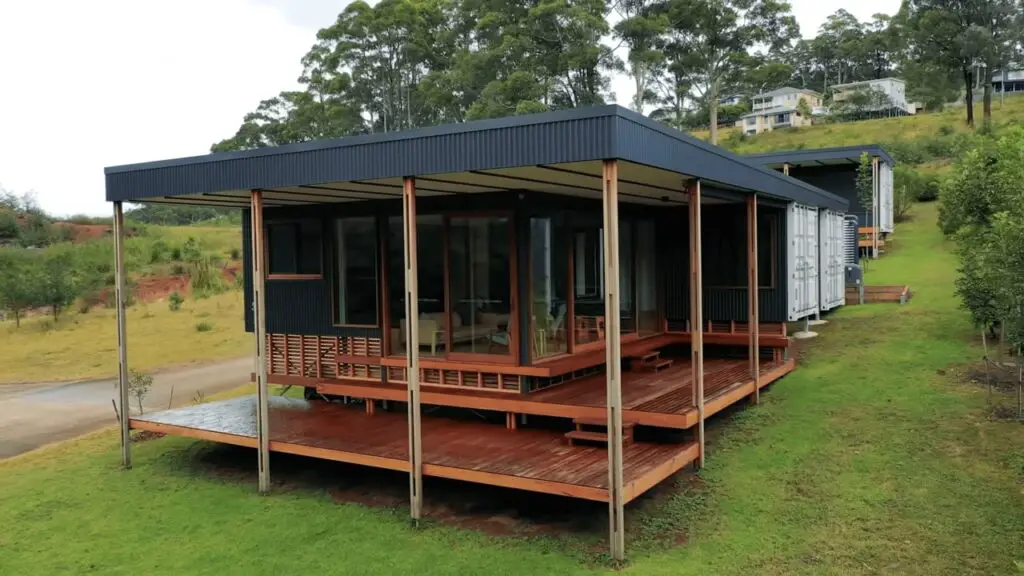
The Impact of Thoughtful Design in Container Homes
Container homes stand as a testament to innovative architecture that merges sustainable living with cost-effective construction. A notable example of these homes is a 1,000-square-foot domicile that comfortably accommodates up to ten individuals.
The distinct shipping container aesthetic is maintained both inside and out, signaling a departure from traditional housing towards more environmentally friendly choices.
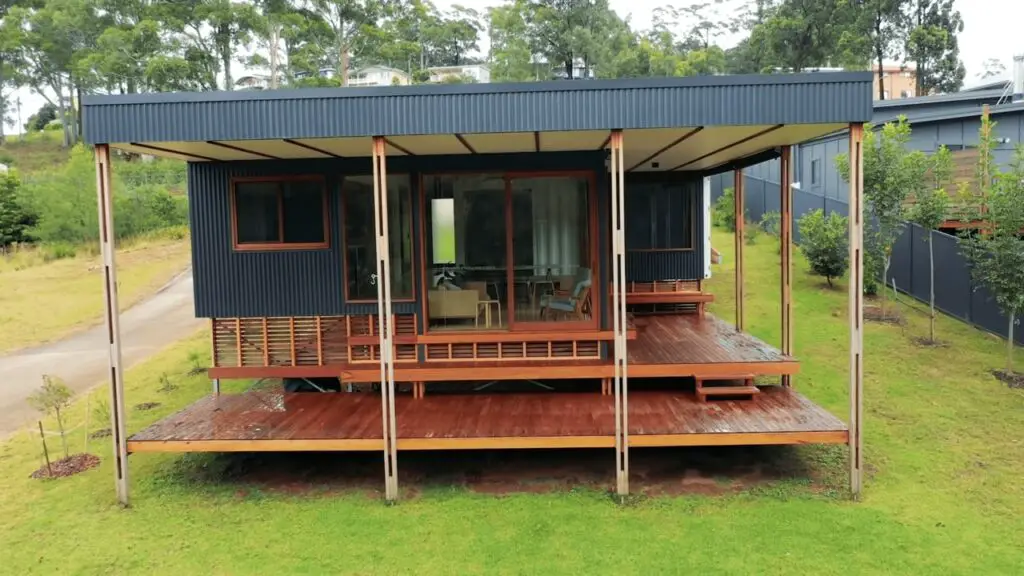
Exterior Features:
- Painted in a modern dark grey
- Original doors with shipping details preserved
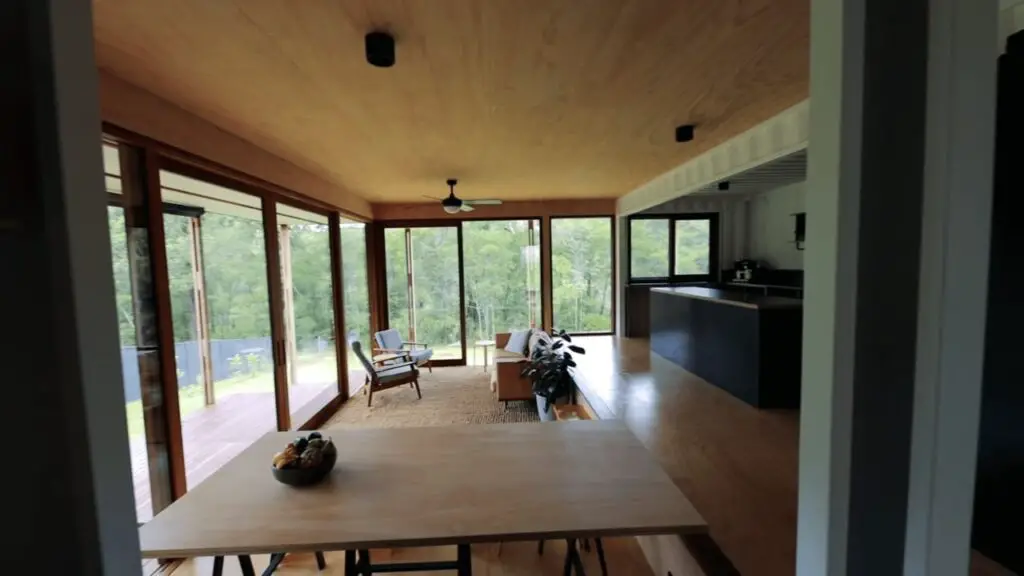
Interior Elements:
- Industrial charm with glossy white walls
- Blonde wood for accent walls, ceilings, and floors
- Sliding doors with a farmhouse flair
Strategic placement of windows ensures the interiors are bathed in natural light, fostering an organic connection with the environment. Highlighting the home’s adaptability, the floor-to-ceiling windows are designed to be hidden by the container’s own doors when privacy is desired.
Transitioning seamlessly from the inside to the outside, a wooden deck extends the living space, emphasizing the structure’s energy efficiency and customizability.
Embracing the concept of prefab modular homes, these recycled shipping containers provide durability and an eco-friendly foundation.
Planning and permits are essential for such constructions, ensuring they meet building codes and regulations while also offering cost-effective solutions without compromising on quality.
In crafting these homes, architects exercise creativity and control over insulation and materials, proving that such designs are not only feasible but also expandable to off-grid living.
Each home can be customised to reflect the owner’s preference, further showcasing the versatility of container constructions in achieving both architecturally designed spaces and sustainable homes.
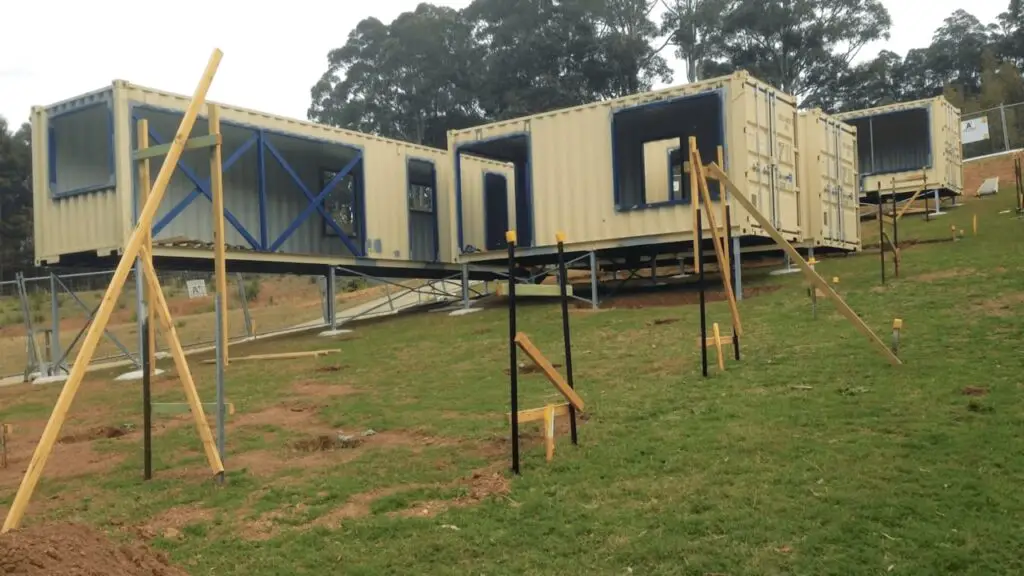
Common Inquiries About Container Housing in Australia
Cost Estimates for Shipping Container Homes Down Under
Building a shipping container home in Australia can be a cost-effective option compared to traditional housing. The expenses vary widely based on factors such as the container’s size, design complexity, and finishes.
- Basic Models: Typically range from $15,000 to $50,000
- Mid-Range Homes: Generally fall between $50,000 and $150,000
- High-End Custom Designs: Can exceed $150,000
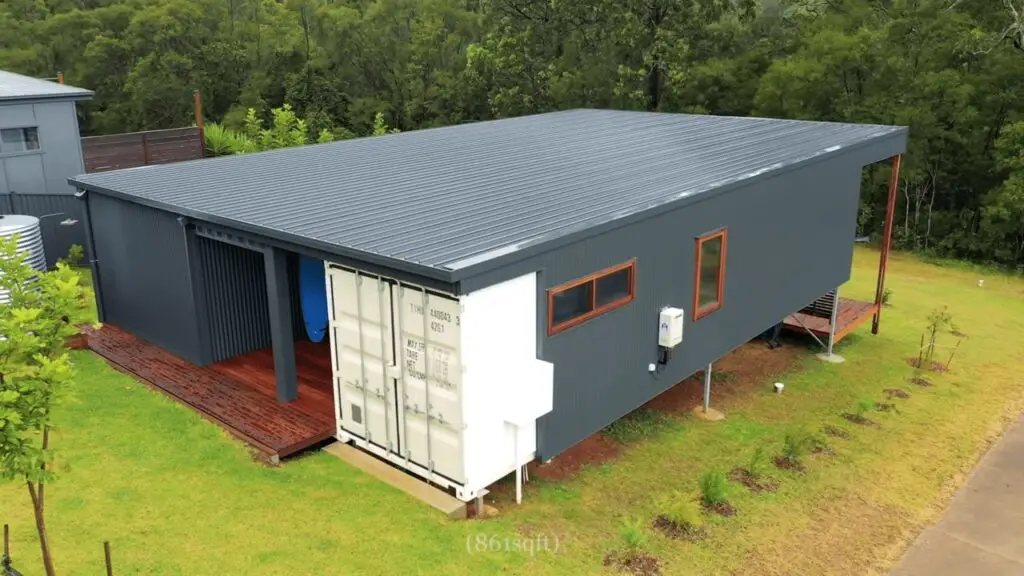
Purchasing Options for Container Homes in Australia
Those interested in purchasing container homes in Australia can look into various avenues.
- Prebuilt Homes: Available from specialized builders and companies
- Custom Builds: Engage with architects or builders who focus on container home construction
- DIY Kits: Buy kits and assemble the home yourself or with professional assistance
Australian Legal Framework for Container Home Construction
The construction of container homes must adhere to the rules and regulations outlined in the Building Code of Australia.
- Planning Permission: Mandatory to seek approval from local councils
- Building Standards: Homes must meet specific construction standards
- Certification: Requires certification once building is complete
Durability of Shipping Container Homes in Australian Climates
The lifespan of container homes in Australia can match that of traditional homes if maintained properly, taking into account the effects of the Australian climate.
- Standard Lifespan: Typically around 25+ years
- Corrosion Resistance: Proper insulation and weatherproofing are crucial
- Maintenance: Regular checks and upkeep extend longevity
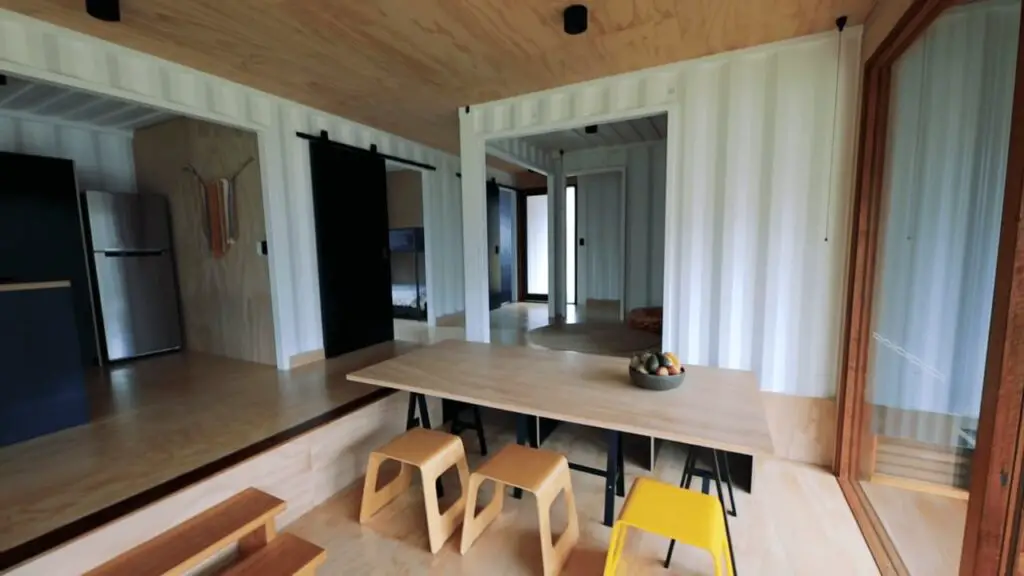
High-End Container Housing in Australia
Luxury shipping container homes in Australia offer high-end features and sophisticated design.
- Architectural Design: Unique designs that maximize space and aesthetics
- Customization: High degree of personalization possible
- Sustainable Features: Sometimes includes eco-friendly elements like solar panels
Designing a Three-Bedroom Container Home
Creating a three-bedroom container home involves careful planning to ensure adequate space and comfort.
- Considerations:
- Layout: Efficient use of space is key.
- Privacy: Proper placement of bedrooms for optimal privacy.
- Lighting: Natural and artificial lighting to enhance the living environment.
Living in a Container explores projects made with shipping containers around the world and shares them for you.
Don’t forget to take a look at the structures made with other amazing shipping containers on our site!
Last Updated : 28/02/2024
